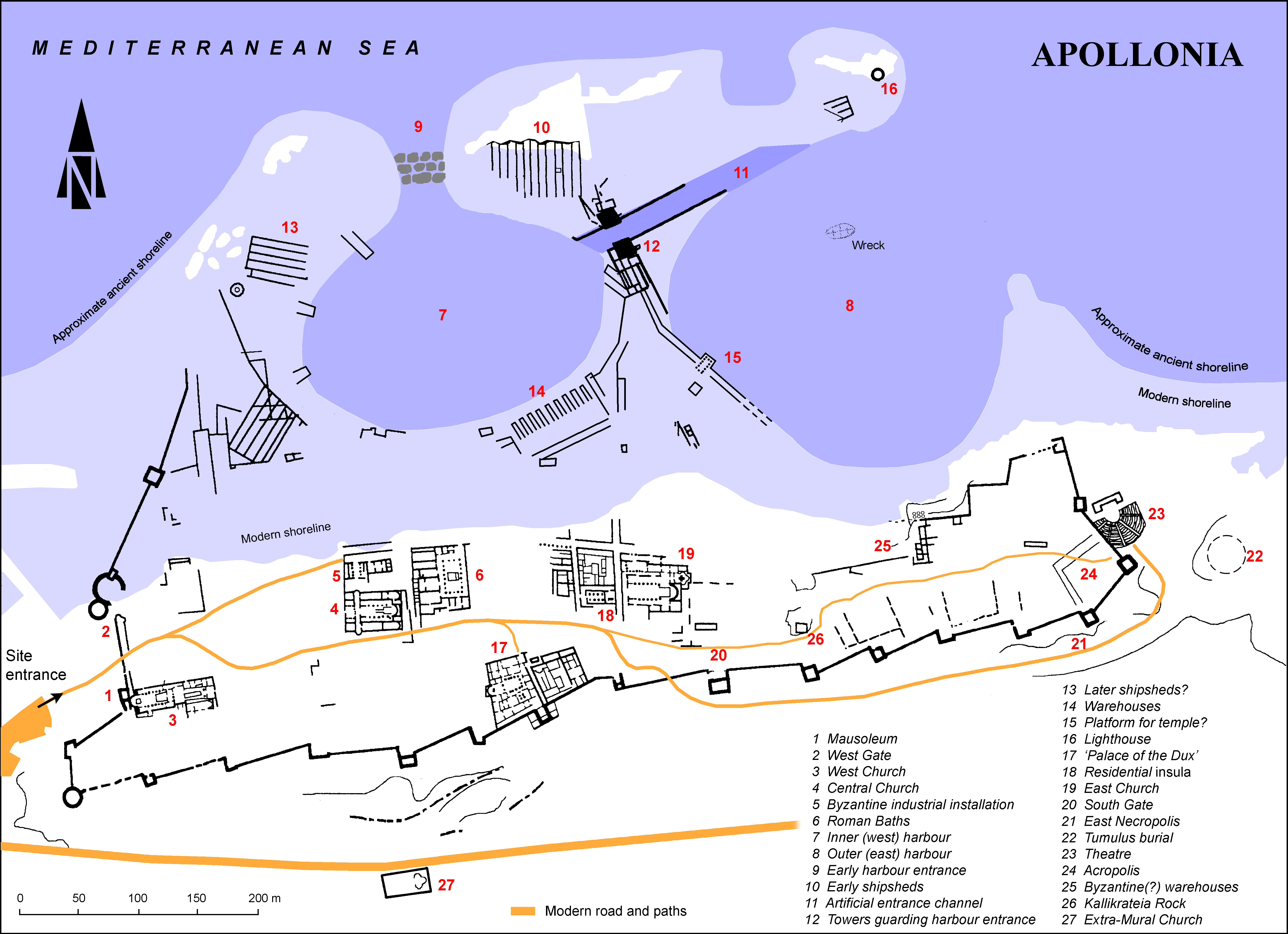EpiDoc XML:
IGCyr1352002
Trismegistos ID:
749386
Source description
Support: Fragment shoulder of a vase, Attic black-glazed ware (or perhaps Gnathian?), decorated with a frieze of notched waves and triple petals painted in white (w: 0.13).
Layout: Scratched above the frieze in one curved line.
Letters: 0.006-0.01, irregularly although rather carefully cut; the letters of the second word are taller than those of the first one; rho with very small loop, still slanting sigma, very tall phi.
Date: Perhaps fourth or third century BC (context, lettering).
Findspot: Found by chance on the surface in 1996 at Port of Cyrene, later Apollonia ➚.
Place of origin: Findspot.
Last recorded location: Apollonia Museum, Storeroom of the French Mission, 96-Ao-A2.SURF384. Seen by C. Dobias-Lalou in 1997 at Sūsah: Apollonia Museum, Storeroom of the French Mission.
Text constituted from: Transcription from object (CDL)
Bibliography
Not published before IGCyr 135200 ➚.
Additional bibliography Dobias-Lalou 2020, p. 67, and fig. 5.
Text
French translation
Hèrakleidès à Aphrodite (?).
English translation
Heracleides for Aphrodite (?).
Italian translation
Herakleides per Afrodite (?).
Commentary
The name Heracleides has not the dialectal form; this is rather rare for private inscriptions before the third century BC. In the port of Cyrene, it might testify of a non-Cyrenaean traveller.
What remains of the last preserved letter might belong to an epsilon. If so, it might belong to a personal name beginning with Ἀφεν(ο)-. However, father's names are not usual in such graffiti (in spite of IGCyr0031002). As what remains of the transverse stroke is curved and does not wholly touch the hasta, rho seems a better reading and would allow to read Aphrodite's name. This goddess is mentioned in several inscriptions of the city of Cyrene, in an area at the South-East of the Sanctuary of Apollo, which might be the 'Aphrodite's garden', mentioned by Pindar, Pyth. 3.25-24. We had up to now no inscribed mention of the goddess in the port of the city, except a possible link with Kallikrateia (IGCyr0333002, see Chamoux 1998). The extramural Doric temple West of the port has been hypothetically attributed to Aphrodite because the action of Plautus' Rudens, inspired from a Greek comedy by Diphilos, takes place near a temple of Venus on the coast near Cyrene (see White in Goodchild – Griffiths Pedley – White – Humphrey 1976, p. 83). However, the place is described as isolated and the case remains obscure. This graffito should not be taken as a further clue in favour of that hypothesis, see Dobias-Lalou 2020.
CC BY-NC-SA 4.0 Deed Attribution-NonCommercial-ShareAlike 4.0 International License.
All citation, reuse or distribution of this work must contain a link back to DOI: https://doi.org/10.60760/unibo/igcyrgvcyr2 and the filename (IGCyr000000 or GVCyr000), as well as the year of consultation.

